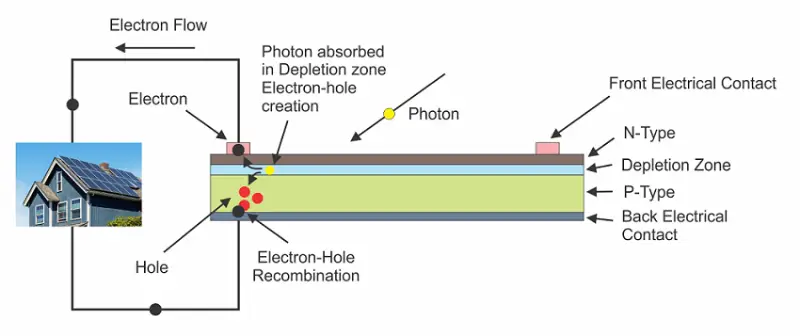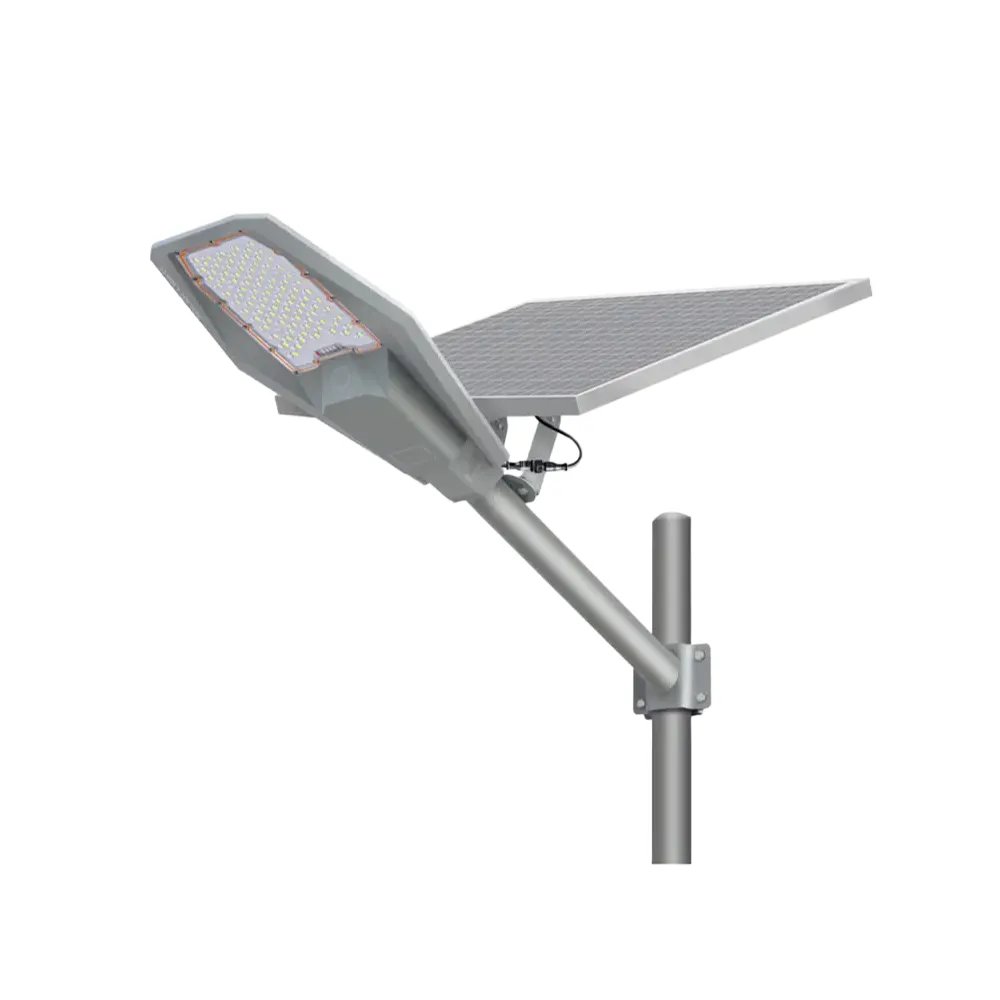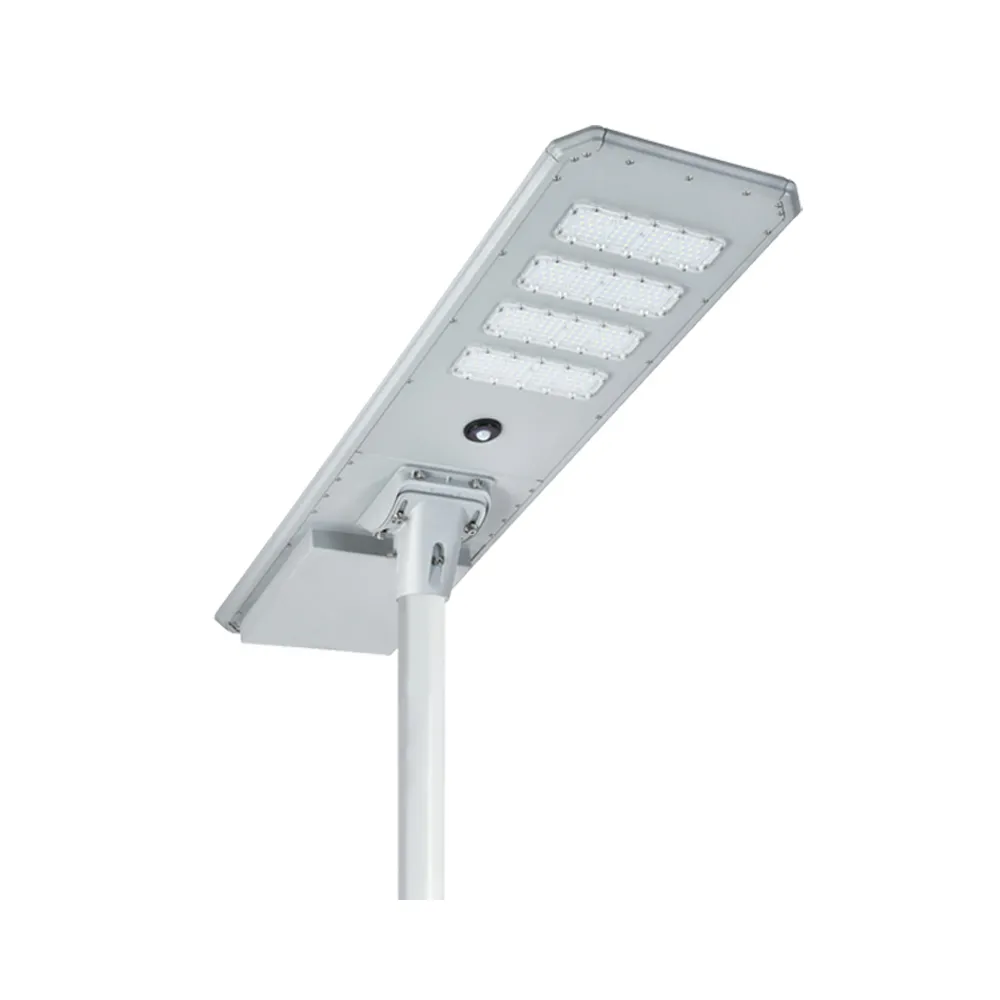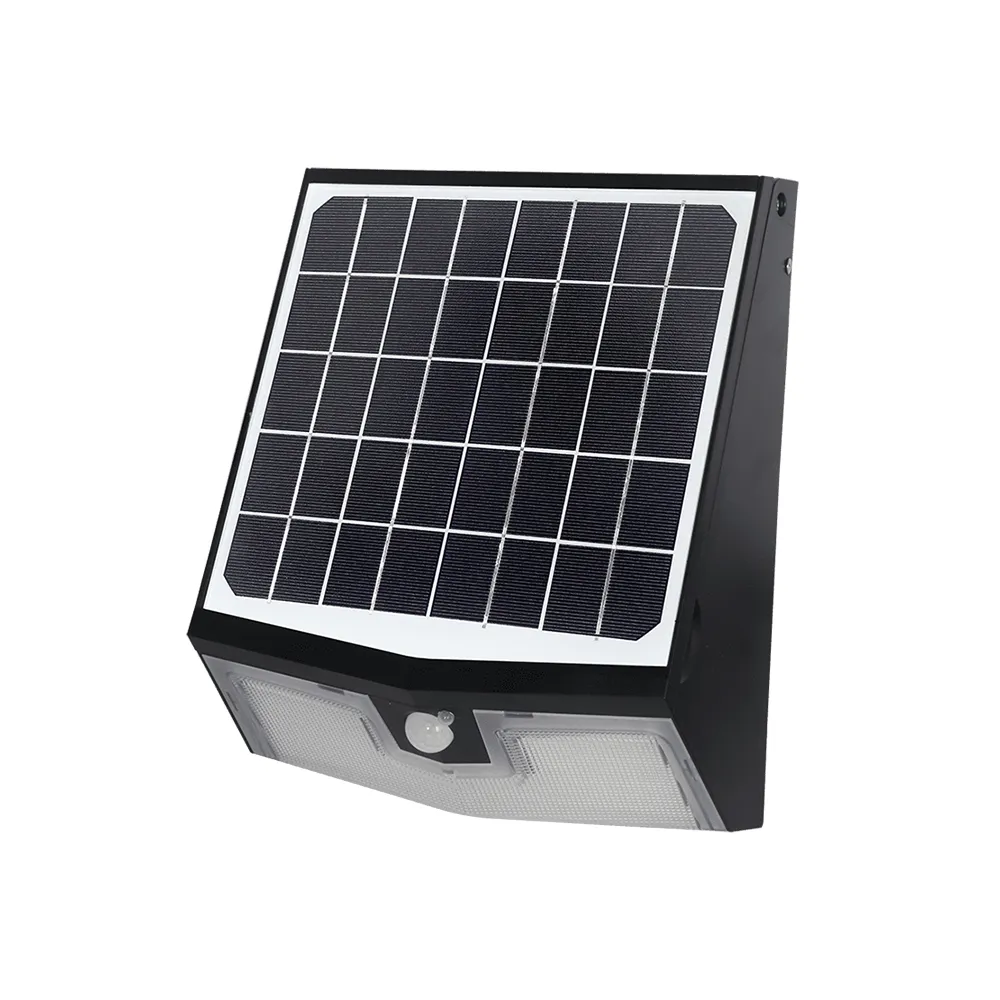Solar lights are a key advancement in our pursuit of renewable energy sources. They are an excellent lighting option in locations with limited access to energy. Additionally, they contribute to environmental protection and cost reduction, making them a preferred choice in many regions. To fully understand how solar lights work and optimize their usage, it is essential to delve into their functioning.
Components of solar lights
A solar LED lighting system consists of several components, including solar cell components (including brackets), LED lamp heads, control boxes (containing controllers and batteries), and light poles.
Solar panels like monocrystalline silicon, polycrystalline silicon, and thin film collect and convert solar energy into electricity. Monocrystalline silicon panels are particularly popular due to their great efficiency in converting solar radiation into electricity.
LED lights are commonly used in solar lights due to their high luminous efficiency, allowing maximum utilization of the collected solar energy. LED lights also last longer, making them ideal for low-maintenance solar lighting solutions.
Batteries, such as lead-acid batteries, nickel-iron batteries, and lithium-ion batteries, are responsible for storing electricity and providing power for lighting purposes.
The DC controller protects the battery from harm caused by overcharging or overdischarging. It also offers light and time management, temperature adjustment, reverse polarity protection, and lightning protection.
As solar street lights generate electricity through solar energy, there is no need for cables.
How do solar lights work?
Solar street lights use solar energy to generate electrical energy for lighting. Solar panels gather sunlight during the day and convert it to electricity, which is then used to recharge the battery pack. In the evening, the electric energy stored in the batteries powers the light source, enabling illumination throughout the night.
Light energy is directly converted into electricity via photoelectric or photochemical processes in solar panels. When sunlight strikes a semiconductor, some of it is reflected, while the rest is absorbed or transmitted. The absorbed light is converted into either heat energy or electron-hole pairs through interactions with the valence electrons of the semiconductor atoms. Electron-hole pairs are therefore produced, which transform light energy into electricity.

Charging the battery with photovoltaic panels involves several steps. Firstly, the panels receive sunlight and generate DC power. This DC power is then regulated by the charge controller, ensuring optimal charging conditions. Finally, the regulated DC power is delivered to the battery for charging. The charge controller is critical to this procedure because it protects the battery from damage.
How many hours do solar lights work and charge?
Solar light charging times vary according to environmental factors. On a sunny day, solar lights can be charged for 6-8 hours, providing illumination for approximately 8-10 hours at night. Cloudy days require longer charging times of 6-8 hours, resulting in 4-6 hours of lighting during the night.
How do solar lights work at night?
The automatic lighting of solar lights is typically achieved through various methods:
Automatic Induction: Light and infrared sensors can be installed in solar lights. When darkness falls, the light controller detects the change in light intensity, triggering the automatic activation of the lamps. The desired light level can be reached by adjusting the lighting control device. Infrared sensors detect moving objects and promptly turn on the lights, enhancing energy efficiency.
Timer Settings: Advanced solar lights may include timers that allow users to set specific activation times during the night. This function allows the lights to switch on according to the schedule.
Remote Control Settings: Some solar lights come with remote controls, which facilitate automatic lighting setting adjustments. Through the remote control, users can access the automatic lighting mode and customize parameters like lighting duration using adjustment buttons or a numeric keyboard.
If it is cloudy, will a solar light keep charging?
Do solar lights work in the shade? Yes, solar lights can work under various lighting conditions, including cloudy days, as they are designed to generate electricity even in low-light situations. Although the efficiency of the solar panel decreases in weaker light, it can still produce a certain amount of power to illuminate the lamps. Solar cells have the capability to absorb light wavelengths beyond the visible range, including ultraviolet light, thus allowing them to operate even in limited lighting conditions. Additionally, many solar lights have an energy-saving mode, which activates in weaker light situations, ensuring optimal utilization of solar energy resources. As a result, solar lights can continue functioning on cloudy days by relying on the substantial energy capacity of their storage batteries.
How to fix solar lights not working?
When your solar light stops working, you can check the components of the light in the following order:
- Power switch: Check that the switch on solar-powered devices is active before usage.
- Check the solar panel: Insufficient solar illumination together with dust or debris blocking the solar panel can be sources of malfunctioning. Clean the solar panel with a soft cloth and ensure it is placed in direct sunlight for 6–8 hours each day.
- Test the battery: Batteries both have a specific lifetime duration and experience corrosion damage. Check for battery corrosion by removing it from its place. Replace the battery with a new one when its lifetime ends.
- Reset the light: Many solar lights come with a reset button. A 10-20 second press of this button restores factory defaults.
- Inspect the LED light: If the light flickers or remains dim, the LED bulb may be faulty. Replace the light if necessary.
- Verify the sensors: Dusting off all foreign matter from the motion and light sensors is essential for maintaining their proper function.
The above are the primary troubleshooting steps. Contact both a technician and the manufacturer if problems continue after following the provided solutions.
Conclusions
Solar lighting is a sustainable solution as it makes use of the solar energy to generate electricity. Through intelligent control and sensor integration, solar lights automatically illuminate when needed, even under challenging lighting conditions. As long as solar lights receive an adequate charging period, they can provide several hours of lighting, making them an excellent choice for numerous applications, particularly in street lighting. Casyoo solar street lights offer all the above advantages. Talk with us to learn more!







